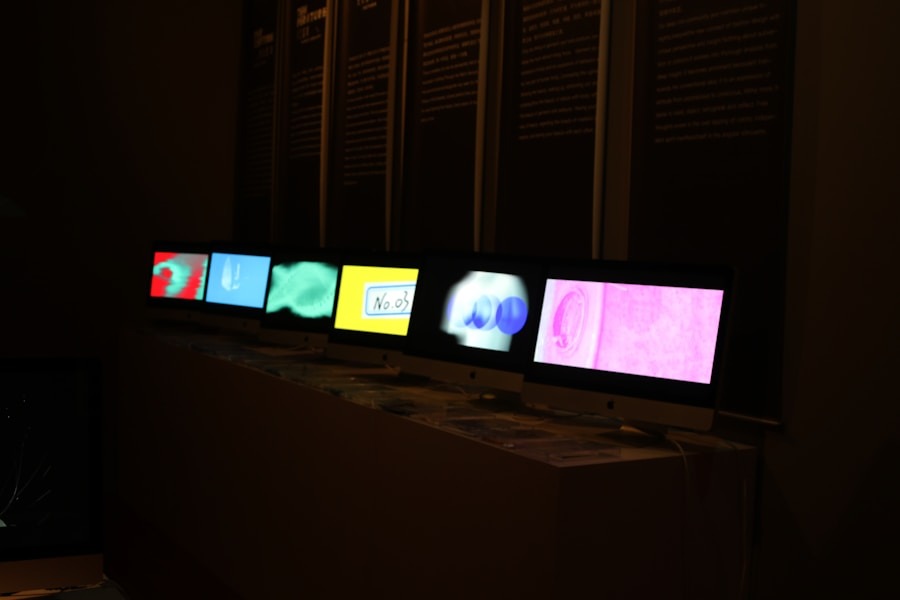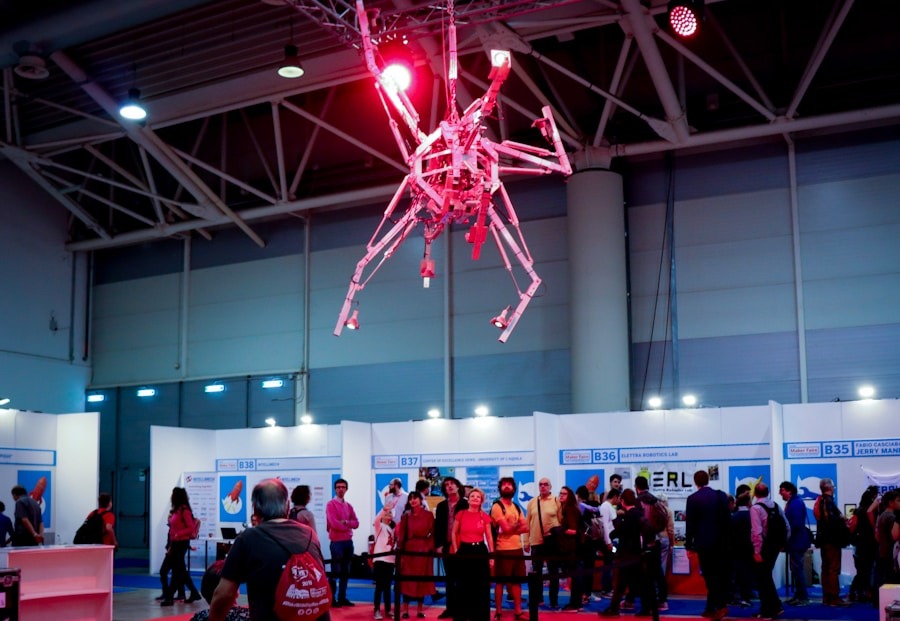Exhibition design has undergone a remarkable transformation over the centuries, evolving from simple displays of goods to complex, multi-sensory experiences that engage audiences on various levels. In ancient times, exhibitions were primarily marketplaces where artisans showcased their wares. These early displays were rudimentary, often consisting of tables or stalls where products were arranged for potential buyers.
As societies progressed, so did the concept of exhibitions. The Great Exhibition of 1851 in London marked a significant turning point, as it introduced the idea of a curated space dedicated to showcasing innovation and culture. This event set the stage for future exhibitions, emphasizing the importance of design in creating an engaging visitor experience.
The 20th century saw further advancements in exhibition design, particularly with the rise of modernism. Designers began to embrace minimalism and functionality, focusing on clean lines and open spaces that allowed for better flow and interaction. The introduction of new materials and technologies, such as glass and steel, enabled architects and designers to create more dynamic structures.
The mid-20th century also witnessed the emergence of trade shows, which became vital for businesses to promote their products and services. This era emphasized branding and marketing, leading to the development of bespoke exhibition stands that reflected a company’s identity. As globalization took hold, exhibitions became platforms for cultural exchange, showcasing not only products but also ideas and innovations from around the world.
Key Takeaways
- Exhibition design has evolved from traditional static displays to more interactive and immersive experiences.
- Cutting-edge technology such as LED screens, holographic projections, and interactive touchscreens are transforming exhibition displays.
- Interactive and immersive experiences, such as virtual reality and augmented reality, are becoming increasingly popular in exhibition design.
- Sustainable and eco-friendly exhibition design is gaining traction, with a focus on using recycled materials and energy-efficient technologies.
- Virtual reality and augmented reality are playing a significant role in enhancing the visitor experience and engagement in exhibitions.
- The future of exhibition design is expected to see a rise in personalized and customizable experiences, as well as a greater integration of technology and sustainability.
Cutting-Edge Technology in Exhibition Displays
The integration of cutting-edge technology into exhibition displays has revolutionized how information is presented and experienced. Digital screens, interactive kiosks, and projection mapping are just a few examples of how technology enhances the visitor experience. For instance, large LED screens can display high-resolution images and videos that capture attention and convey messages more effectively than traditional print media.
This shift towards digital has allowed exhibitors to create dynamic content that can be updated in real-time, ensuring that information remains relevant and engaging throughout the duration of the event. Moreover, augmented reality (AR) and virtual reality (VR) have emerged as powerful tools in exhibition design.
For example, a museum exhibit might use AR to overlay digital information onto physical artifacts, providing context and depth to the visitor’s experience. Similarly, VR can transport users to different environments or historical periods, allowing them to engage with content in an immersive manner. This not only enhances learning but also creates memorable experiences that resonate with attendees long after they leave the exhibition.
Interactive and Immersive Experiences

The demand for interactive and immersive experiences in exhibitions has grown significantly as audiences seek more than passive observation. Today’s visitors expect to engage with exhibits actively, whether through hands-on activities, gamification elements, or participatory installations. This shift has led designers to rethink traditional exhibition layouts, incorporating elements that encourage exploration and interaction.
For instance, science museums often feature interactive displays where visitors can conduct experiments or manipulate objects to see real-time results. Such experiences foster curiosity and learning by allowing individuals to discover concepts through direct engagement. Immersive experiences take this concept a step further by enveloping visitors in a multi-sensory environment.
The use of soundscapes, lighting effects, and tactile elements can transport attendees into a different world, making them feel as though they are part of the narrative being presented. An excellent example of this is the Van Gogh Museum’s immersive exhibitions that utilize projection mapping to bring the artist’s works to life. Visitors walk through rooms where paintings are animated, accompanied by music that enhances the emotional impact of the visuals.
This level of immersion not only captivates audiences but also deepens their understanding and appreciation of the subject matter.
Sustainable and Eco-Friendly Exhibition Design
As awareness of environmental issues grows, sustainable and eco-friendly exhibition design has become a crucial consideration for designers and organizers alike. The traditional approach to exhibitions often involved significant waste generation and resource consumption, prompting a shift towards more sustainable practices. Designers are now prioritizing materials that are recyclable or biodegradable, reducing the environmental footprint of their installations.
For example, many exhibitors are opting for modular designs that can be reused across multiple events rather than creating single-use structures that end up in landfills. In addition to material choices, sustainable exhibition design also encompasses energy efficiency and waste management strategies. Many exhibitions now incorporate renewable energy sources, such as solar panels or wind turbines, to power their displays.
Furthermore, organizers are implementing comprehensive recycling programs to ensure that waste generated during events is minimized and properly managed. This commitment to sustainability not only benefits the environment but also resonates with increasingly eco-conscious audiences who appreciate brands that prioritize responsible practices.
The Role of Virtual Reality and Augmented Reality in Exhibitions
Virtual reality (VR) and augmented reality (AR) have emerged as transformative technologies within the realm of exhibition design, offering unprecedented opportunities for engagement and storytelling. VR allows users to immerse themselves in entirely virtual environments, providing experiences that can be both educational and entertaining. For instance, an exhibition on space exploration might use VR to simulate a journey through the solar system, allowing visitors to experience what it feels like to walk on Mars or orbit Earth.
This level of immersion can create a profound connection between the audience and the subject matter. On the other hand, AR enhances the physical world by overlaying digital information onto real-world objects. This technology can be particularly effective in educational settings where context is essential.
For example, an archaeological exhibit might use AR to provide additional information about artifacts when viewed through a smartphone or tablet.
By blending digital content with physical exhibits, AR enriches the visitor experience and encourages deeper exploration.
The Future of Exhibition Design: Trends and Predictions

Looking ahead, several trends are poised to shape the future of exhibition design as technology continues to advance and audience expectations evolve. One significant trend is the increasing emphasis on personalization. As data analytics become more sophisticated, exhibitors will be able to tailor experiences based on individual preferences and behaviors.
This could manifest in customized content delivery or interactive elements that respond to visitors’ choices in real-time. Another trend is the growing importance of hybrid events that combine physical and virtual components. The COVID-19 pandemic accelerated this shift as many exhibitions transitioned online or adopted hybrid formats to reach broader audiences.
Moving forward, designers will need to create cohesive experiences that seamlessly integrate both physical and digital elements, ensuring that attendees can engage meaningfully regardless of their mode of participation. Furthermore, as sustainability becomes a central concern across industries, exhibition design will likely continue its trajectory toward eco-friendliness. Innovations in materials science may lead to new sustainable options for construction and display that minimize environmental impact while maintaining aesthetic appeal.
As designers embrace these trends and adapt to changing audience needs, the future of exhibition design promises to be dynamic, engaging, and increasingly responsible in its approach to both people and the planet.
For more insights into the intersection of psychology and sociology, check out the article























+ There are no comments
Add yours